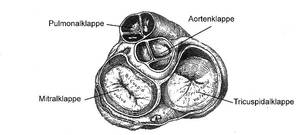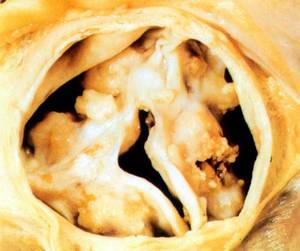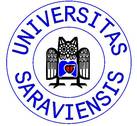Heart valve operations
Content: |
Department of Thoracic and Cardiovascular Surgery Homburg/Saar |
General comments
Every normal heart consists of heart muscle and 4 valves. Two valves are located between forechambers (atria) and pumping chambers (ventricles) as inlet valves, the 2 other are between ventricles and big arteries (aorta, pulmonary artery) as outlet valves of the pumping chambers. These valves regulate inflow into the heart and outflow into lungs of the body through coordinated opening and closing.

Abb. 1: Illustration of the 4 Valves in a human heart
A disease may be caused by an inborn anomaly that gets worse with age. Some heart valve disease may only occur with wear due to increasing age or as a consequence of infections with bacteria. Signs of heart valve disease may vary. The disease is often unrecognized for many years because the heart compensates the functional disturbance and patient does not experience any symptoms. If symptoms occur, decreased exercise tolerance is the most frequent. This may be felt as shortness of breath on physical exertion, increased fatigue, or simply “getting slower”. Chest pain may occur with some diseases, sometimes swelling of the ankles is noted.

Abb. 2: Picture of a massive calcified aortic valve
The valves that are most frequently affected are those of the left heart. The mitral valve is the inlet valve of the left ventricle, and the aortic valve the outlet valve. One can differentiate between two principal functional changes, narrowing during outflow (Stenosis) or leak during the closed phase (regurgitation). Sometimes a combination of the 2 disturbances may exist. The exact type of valve dysfunction may be detected by ultrasound (echocardiogram). Once a certain level of functional impairment is reached medication is not sufficient to stabilize the heart, and an operation or intervention is necessary. Without surgery principally the situation will continue to get worse, and ultimately additional damage to the heart muscle will develop that will contribute to heart failure or death.
Prof. Dr. med. H.-J. Schäfers, 04.01.2019





